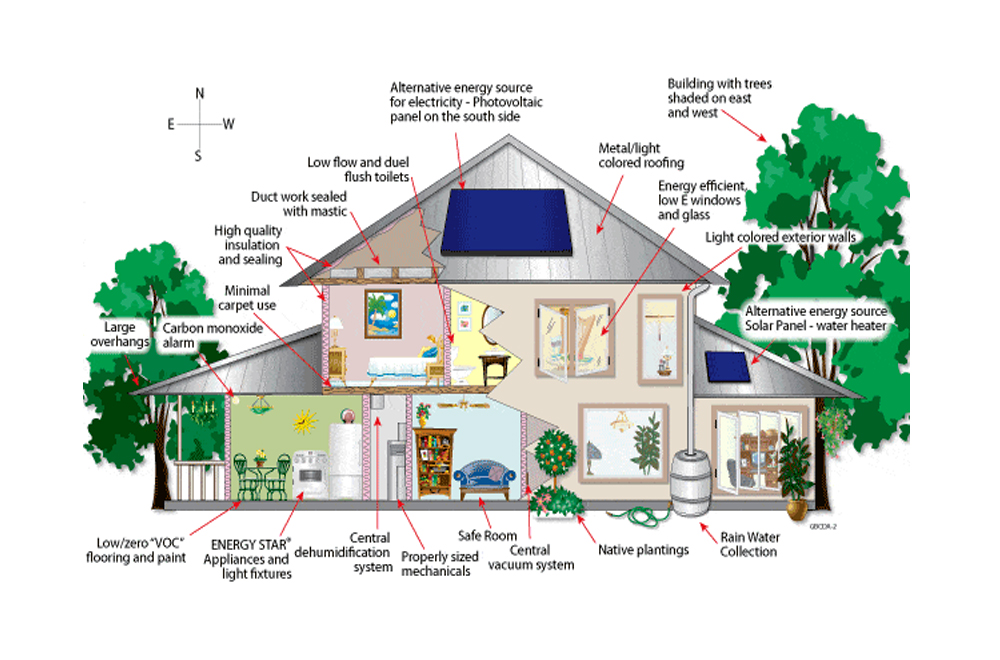Construction procurement, at its core, is the strategic process of acquiring goods and services essential for the successful execution of a construction project. This meticulous procedure encompasses everything from sourcing raw materials to securing skilled labor, making it a cornerstone of project management within the construction industry.
Procurement serves as the linchpin, connecting various elements required for project completion in the construction industry’s supply chains. Efficient procurement ensures the timely availability of resources and contributes significantly to the overall profitability of construction ventures.
An effective procurement strategy drives streamlined operations in an industry where timelines are crucial and resource management is paramount. By optimizing the flow of materials and services, construction companies can enhance productivity, minimize delays, and ultimately bolster their bottom line.
Table of Contents
ToggleWhat is Procurement in Construction
Construction procurement, a strategic undertaking crucial for project success, involves efficiently securing goods and services. Directed by project leaders, this multifaceted process extends beyond defining project requirements and soliciting bids. It encompasses meticulous supplier selection, contract negotiation, and organized project delivery, ensuring timely and budget-conscious completion.
Multi-Step Procurement Process
The construction procurement landscape involves a multi-step process designed to address the diverse needs of each project. This process is a well-orchestrated dance, starting from identifying project requirements and culminating in delivering the finished structure. Each step plays a vital role in ensuring the right resources are secured at the right time, maintaining the delicate balance required for project success.
This multi-step approach typically includes stages such as project initiation, needs assessment, supplier identification, and negotiation. The goal is to align every facet of the procurement process with the unique demands of the construction project, setting the stage for seamless and efficient execution.
As we explore the nuances of construction procurement, it becomes evident that this process is not just a logistical necessity but a strategic imperative. It is the backbone for successful construction projects, laying the foundation for industry growth and innovation.
Types of Construction Procurement Methods
1. Single-Source Procurement
Single-source procurement is a straightforward approach where a project is awarded to a single contractor or supplier. This method is most applicable when a client has identified an entity with unique expertise or resources crucial for the project’s success. It simplifies decision-making by focusing on a sole provider who can efficiently fulfill the project requirements.
Advantages
- Streamlined Communication: With a single source, communication channels are clear and concise, minimizing the risk of misinterpretation or miscommunication.
- Efficiency in Decision-Making: Decision-making processes are expedited, facilitating a quicker project kick-off.
- Specialized Expertise: Clients can tap into technical expertise, which is especially beneficial for projects requiring niche skills or technologies.
Considerations
- Limited Competition: The absence of competitive bids may limit cost-saving opportunities.
- Dependency Risk: Relying on a single source introduces a level of dependency, making the project vulnerable to disruptions if issues arise with the chosen contractor.
2. Multiple-Source Procurement
Multiple-source procurement involves engaging with more than one contractor or supplier for various project components. This method is suitable when the project’s complexity or scale demands diverse skills or resources that may not be available from a single source. It promotes competition among suppliers, fosters innovation, and potentially drives down costs.
In today’s digital age, procurement in construction also involves leveraging online resources. Explore these online sources for building materials in the US, which provide a range of options for sourcing quality materials efficiently, complementing traditional procurement methods.
When and Why to Opt for Multiple Sources
- Diverse Skill Sets: Projects requiring a spectrum of skills are best suited for multiple-source procurement to ensure that experts in that field handle each aspect.
- Risk Mitigation: Distributing tasks among multiple sources can mitigate the risk of project delays or failures associated with dependence on a single entity.
- Innovation and Creativity: Competition among multiple sources encourages innovation, bringing creative solutions to project challenges.
3. Two-Stage Tender
The two-stage tender is a method that involves an initial pre-qualification stage followed by a competitive tendering process. Potential contractors are assessed based on their qualifications, experience, and capability during the pre-qualification stage. Shortlisted candidates then proceed to the competitive tender stage, where they submit detailed proposals.
Pros
- Early Contractor Involvement: Early collaboration in the pre-qualification stage allows for valuable contractor input, fostering a more cooperative working relationship.
- Refinement Opportunities: The two-stage process provides opportunities for adjustments and refinements in the project scope before the final tender submission.
Cons
- Extended Timeline: The two-stage process may elongate the procurement timeline, impacting the overall project schedule.
- Resource-Intensive: Requires substantial resources for clients and contractors during pre-qualification.
4. Selective Tendering
Selective tendering involves inviting a pre-qualified group of contractors or suppliers to bid on a project. Unlike open tendering, where anyone can submit a bid, selective tendering narrows the field to a carefully chosen group. This method is characterized by a strategic approach to procurement, ensuring that only contractors with proven capabilities and expertise are considered.
Ideal Situations for a Selective Procurement Approach
- Complex Projects: Selective tendering is well-suited for projects with intricate requirements requiring a specialized skill set.
- Established Relationships: Ideal when a client has established relationships with certain contractors based on past successful collaborations.
- Time-Sensitive Projects: In situations where time is of the essence, selective tendering can expedite the procurement process by involving only pre-qualified, reliable contractors.
5. Open Tendering – A Transparent Approach
Open tendering is a transparent procurement method where any interested contractor or supplier can submit a bid for the project. This inclusive approach fosters competition and ensures a broad pool of potential candidates.
Advantages
- Increased Competition: Open tendering promotes healthy competition, potentially leading to cost savings for the client.
- Transparency: The process provides equal opportunities for all interested parties.
- Market Expansion: Allows newer or smaller contractors to enter the market and compete for projects.
Challenges
- Quality Variation: The open nature might attract various bidders with varying expertise and capabilities.
- Time-consuming: Sorting through numerous bids can be time-consuming for clients and contractors.
6. Negotiated Contracting
Negotiated contracting involves direct negotiations between the client and a selected contractor. Unlike competitive tendering, negotiation is a key element from the outset, allowing for flexibility in project details.
Instances Where Negotiation is Preferable
- Complex Projects with Uncertain Scope: Negotiated contracts are beneficial when project details are unclear or subject to change.
- Unique Expertise Requirement: If a project demands specific expertise available from a particular contractor, negotiation allows for a tailored agreement.
- Time-Sensitive Projects: Negotiation can expedite the procurement process, which is crucial for projects with tight timelines.
Choosing the Right Procurement Methods in Construction
Choosing a suitable procurement method is akin to laying the foundation for success. Each project is unique, presenting distinctive challenges and opportunities.
Aligning with Project-Specific Needs
Aligning the procurement method with project-specific needs is crucial to ensure that the chosen approach caters to the intricacies of the venture. Whether a large-scale infrastructure development or a specialized construction project, tailoring the procurement method sets the stage for efficient resource allocation and streamlined project execution.
Balancing Value and Project Requirements
While cost is pivotal, achieving value extends beyond mere financial considerations. Balancing value encompasses assessing a procurement method’s overall benefits to the project. This involves evaluating factors such as time efficiency, risk mitigation, and innovation potential. Striking the right balance ensures that the chosen procurement method meets budgetary constraints and adds significant value to the project in terms of quality, timeliness, and overall success.
Understanding various procurement methods is crucial, but equally important is knowing how to optimize expenses. This detailed guide on how to save money on building materials offers practical strategies to reduce costs without compromising quality, aligning well with efficient procurement practices.
Client’s Role in Making the Optimal Procurement Decision
Clients play a central role in the procurement decision-making process. Understanding project objectives, constraints, and priorities empowers clients to make informed choices. Effective communication between clients and procurement professionals is crucial for articulating project requirements and expectations.
Clients need to weigh the advantages and drawbacks of each procurement method, considering both short-term goals and long-term implications. By actively participating in the decision-making process, clients contribute to the project’s success from its conceptualization to its realization.
Procurement isn’t just about choosing the right method; it’s also about executing it effectively. Learn how to buy construction materials online, a guide that simplifies the online procurement process, ensuring that project managers can secure the best materials in a timely and cost-effective manner.
Accreditation and Verification in Construction Procurement
Accreditation and verification schemes serve as a stamp of approval, indicating that contractors and suppliers meet predetermined competence and quality standards. The significance of accreditation lies in vouching for a participant’s capabilities and establishing a baseline of excellence in the industry. Clients can rely on accredited entities with confidence that they adhere to industry best practices and standards.
Standing Out in the Competitive Procurement Process
Accreditation and verification provide a competitive edge by differentiating contractors and suppliers from their peers. It signals to clients that an accredited entity has undergone rigorous scrutiny and possesses the necessary skills and resources to deliver exceptional results. This differentiation becomes a key factor in winning contracts and securing a reputable standing in the competitive procurement process.
How Contractors and Suppliers Benefit from Accreditation
For contractors and suppliers, accreditation is a strategic investment. It opens doors to a wider array of project opportunities and fosters credibility and trust among clients. Accredited entities are more likely to be considered for prestigious and high-profile projects, enhancing their portfolio and industry standing. Additionally, accreditation serves as a continual incentive for improvement, encouraging contractors and suppliers to maintain and elevate their standards to stay at the forefront of the industry.






